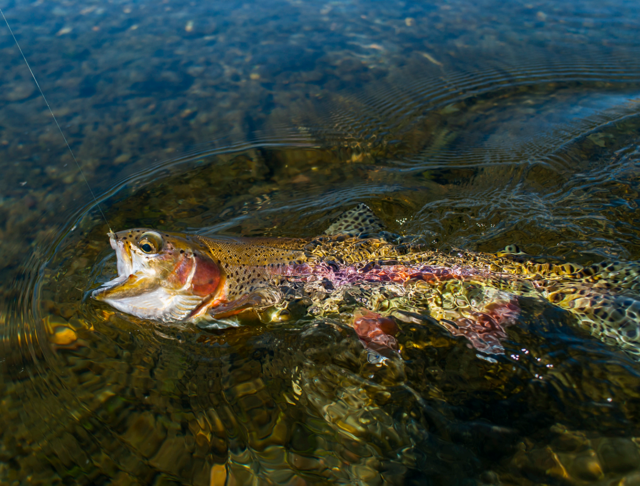Nature up close: Steelhead trout
By “Sunday Morning” contributing videographer Judy Lehmberg.
I want you to think about something for a minute. Imagine it is about one month before you were born and that your parents live in Cleveland, Ohio. They decide to take a trip to New York City to enjoy a vacation before they settle down to a new life with their new baby, you. They travel to New York City and spend a week seeing Broadway shows, eating at nice restaurants and maybe doing a little shopping. As they prepare to leave New York your mom goes into early labor, is rushed to a hospital, and you are born. After a few days you all return to Cleveland. When you are 14 years old they tell you, “now it is time for you to go back to New York City.” They don’t tell you how to get there. They don’t offer to take you. They just say “Go.” Now imagine that since you were born there, you actually know how to get there on your own. You don’t ask directions. You don’t use Google. You just go.
Not very likely is it? But fish aren’t like us. Steelhead trout don’t have a problem finding the stream where they hatched. They can find the area where they hatched years after they’ve left that stream as a baby, a fry. Based on their brain size most of us don’t think fish are very smart and in a lot of ways that is probably correct, but they are really good at being a fish. For a number of years researchers thought fish found the stream where they hatched by smell. More recent studies indicate they also use the Earth’s magnetic field as well as day length, salinity, and the sun’s position. It may be that they use a combination of all of these methods.
Steelhead are genetically the same as rainbow trout, but their life cycle is very different. Rainbow and steelhead trout spawn by first creating a redd, a depression in the gravel of a highly oxygenated coldwater stream. The fish make a redd by wiggling their tail to make a depression in the streambed gravel. Then the female releases her eggs while the male releases sperm. The female then wiggles her tail just upstream of the redd moving gravel to cover the fertilized eggs. Once she covers them the eggs are on their own. Rainbow trout spend their entire lives in freshwater. Steelhead don’t. After their eggs hatch they spend two to three years in freshwater feeding on aquatic insects and anything else they can catch. They eventually move into the Pacific Ocean. There they spend two to three years eating fish, squid and amphipods while growing much larger than rainbow trout. They return to the same stream where they hatched to spawn. Many steelhead die after spawning, but some survive. These return to the ocean and repeat their spawning migration again the following year.
The ability to move from freshwater to saltwater and back again is an amazing physiological feat. If someone dumped you in the ocean, you would die. You would die of dehydration even though you are surrounded by water. When your cells contact salt water they begin to lose water because the membrane surrounding each of your cells is semipermeable. Remember that biology lesson about osmosis? Steelhead move slowly from freshwater to saltwater spending several weeks in the brackish water near the ocean. This gives them time to adjust to the increased concentration of salts. As they move into salty water they begin to drink water and both their kidneys and gills begin excreting excess salt. The following year when they return to freshwater their kidneys reverse the process and begin excreting excess water and they stop drinking water. Steelhead and all salmonids need clean, cool water. Their habitat has been degraded by urbanization, logging, and stream dewatering. Additionally, they need access from the ocean to inland spawning streams. In western states many dams block potential spawning steams. There is still more work to be done but some of the unnecessary dams are being removed, resulting in restored steelhead access to their spawning streams
Judy Lehmberg is a former college biology teacher who now shoots nature videos.
For more info:
- Judy Lehmberg (Official site)
- Judy Lehmberg’s YouTube Channel
To watch extended “Sunday Morning” Nature videos click here!
